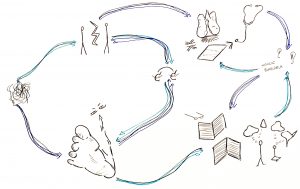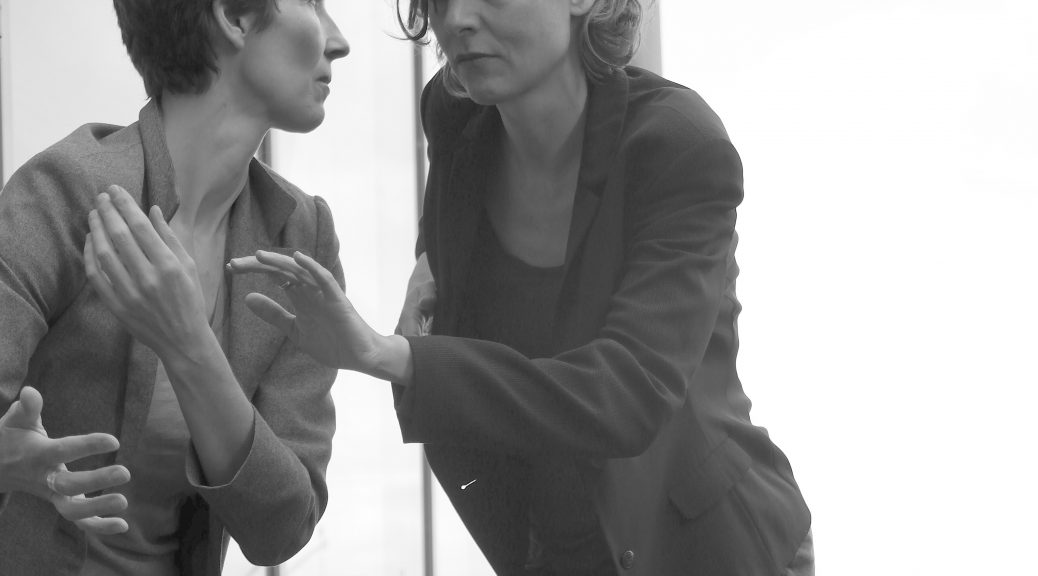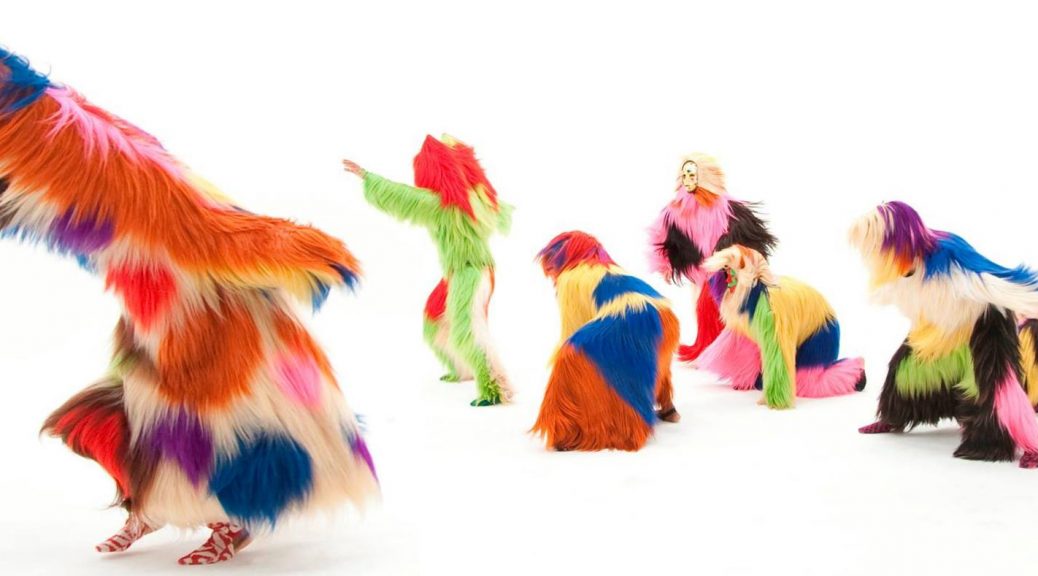
Workshop, Thursday March 2, 5pm 7pm
Suggested contribution €10, everyone welcome, register
The workshop is a moment of sharing within the residency of Emilie Gallier and Teoma Naccaroto.
Two rivers spill into each other. Each body of water has a unique rhythm, temperature, and composition, so the process of mixing is gradual and dynamic. Confluence involves collision, resistance, and mediation – in context. We explore confluences across analog and digital materialities, through tactile gazing and listening between partners, and with objects. Using stethoscopes and transducers, we play with how sounds from the body and environment can be (re)materialized and (re)distributed as haptic feedback in the surfaces of paper and skin. We share practices that involve breathing and sensorial exercises as a way to tune the act of reading into a tactile activity. As we listen and read, the channels of confluence multiply and overflow, leading us to examine moments of dissonance and interruption within collective practice and creation.
Bios
Teoma J. Naccarato (Montréal, Canada / London, UK) is a choreographer and interdisciplinary arts researcher. Through her collaborative creations for stage and installation, she explores the appropriation of surveillance and biomedical technologies in contemporary dance and performance. Her work proposes promiscuous encounters between participants, human and nonhuman, to provoke intimacy, vulnerability, and uncertainty. She has shared choreography internationally, with recent presentations of Experience #1167, Synchronism, and X. Naccarato has an MFA in Dance from the Ohio State University, and is presently pursuing a practice-based PhD at the Centre for Dance Research (C-DaRE) at Coventry University. http://www.naccarato.org/dance
Emilie Gallier is a French choreographer ( PØST Cie) and a researcher (C-DaRE Coventry University) living in Leiden (NL). Her work shows recurring subjects of imagination, sensation and thought. She uses the writing of movement and the movement of reading (scores and choreographic objects) to research relation within theatre, probing exchanges between spectators. Her dance performances on stage and on paper, her lectures and workshops are presented in The Netherlands and Europe. Since 2016, PhD Candidate in Coventry, she graduated in 2012 from the Master of Choreography at ArtEZ (Arnhem). Before that she attended the program Transforme with Myriam Gourfink and learned Laban kinetography at the Conservatoire de Paris. As part of her practice, Emilie Gallier writes, edits, teaches, performs, collaborates (Rosie Heinrich, Tilman Andris, Clémence Coconnier), works as a mentor, a lecturer, member of the artists-run cultural space CLOUD in The Hague. Current projects include Trouble Wit and Read. Move. Implicated. http://www.post-cie.com


